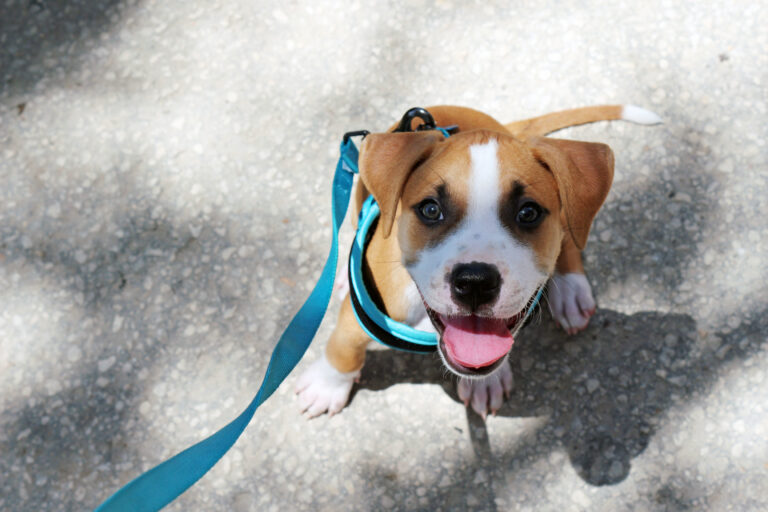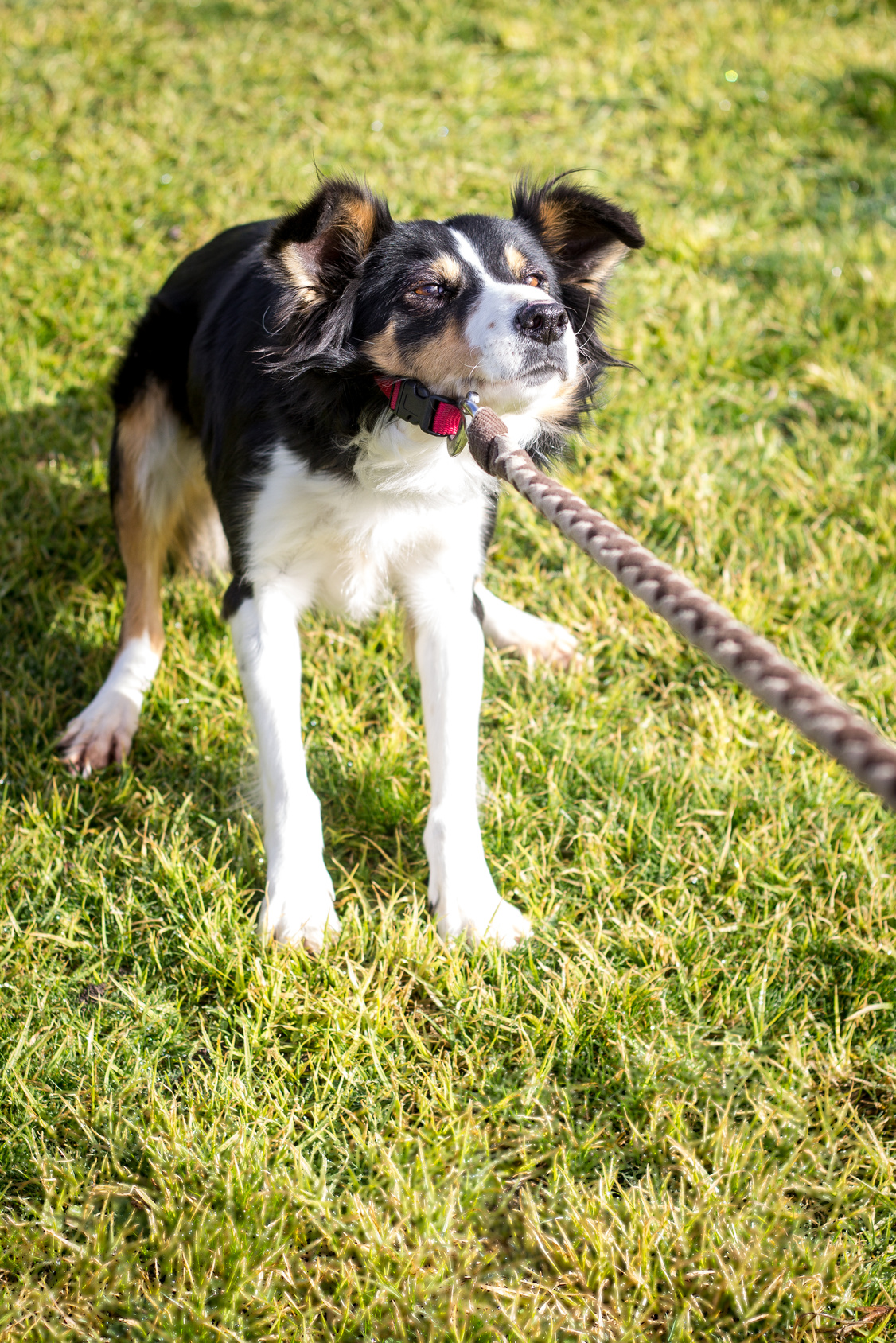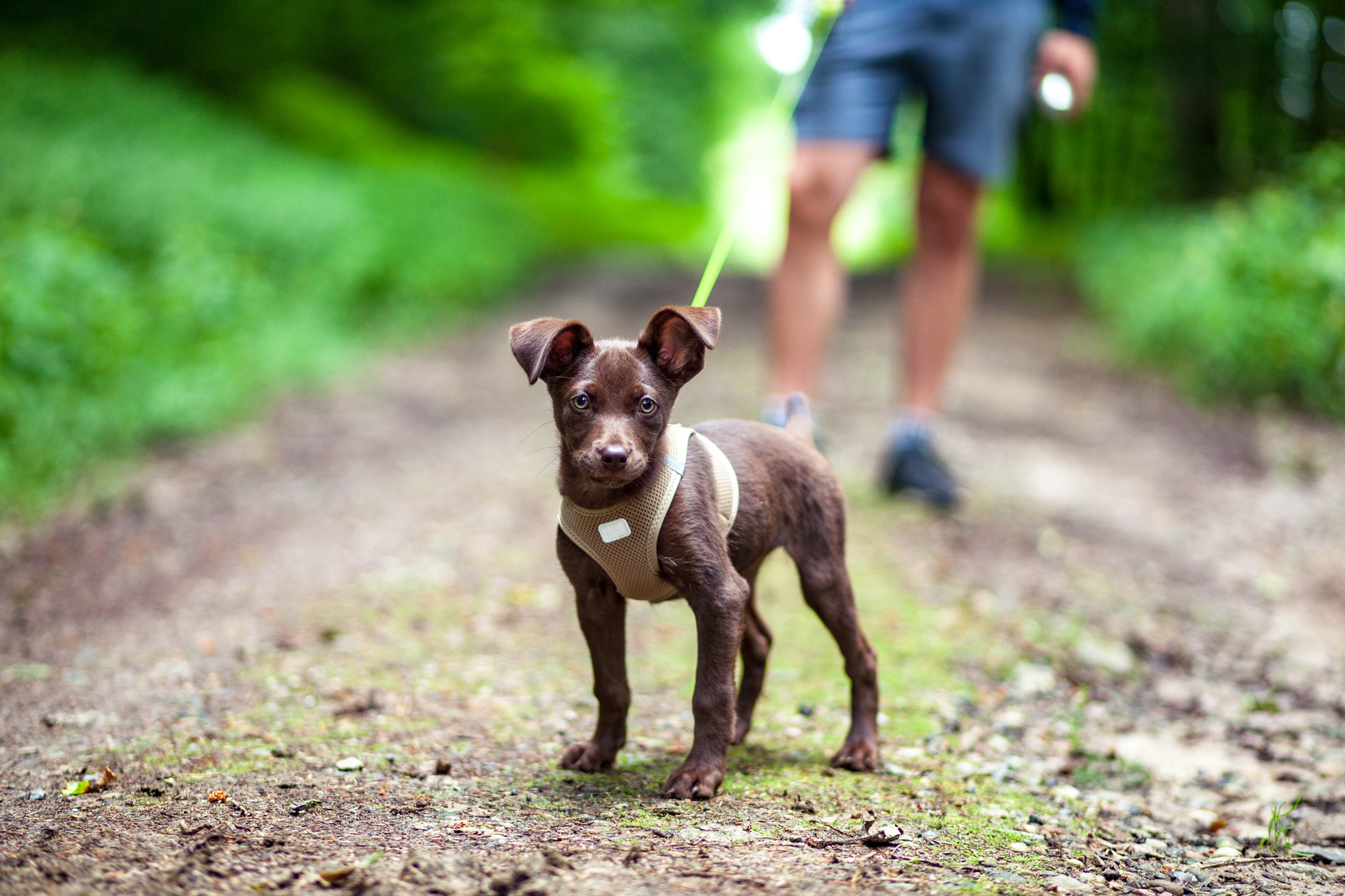Development of Puppies: From Birth to Adulthood
Every puppy goes through several developmental phases until it eventually grows into an adult dog. Learn more what is crucial for the development of puppies into self-assured and serene dogs.
It's important to teach your dog to be relaxed on a lead. Your dog pulling can turn pleasant walks into a test of patience. Pulling can be a particularly serious problem if your dog is a large, heavy breed and difficult to control. Especially when your dog decides it wants to dart off in a different direction. Problems with walking your dog on a lead start from puppyhood, but with a bit of know-how and a little patience, you can lay the best foundation for happy on-lead walking in future.

© LifeGemz / stock.adobe.com
The basis principle to train your puppy to be relaxed on a lead is very easy. There are just two rules:
However, these rules need to be followed consistently if you want them to work. If the dog is pulling, it’s often because the hooman isn’t following the rules. This teaches the puppy that all it needs to do to reach a certain place or exciting smell is pull on the lead. No matter whether your dog is reaching for another dog or an interesting branch, many puppy owners instantly give in to the curiosity and let their dog lead the way. Although your puppy will enjoy discovering all of these new sights and smells, it can internalise behaviours that can only be altered with difficulty and a great deal of patience.
 © lgp71 / stock.adobe.com
© lgp71 / stock.adobe.com
Right from the start, your puppy should be happy to follow you every step of the way. Initially begin by luring your puppy forward a few metres without the use of a lead. This can start from around the eight-week mark, and should also help to build the bond between you. If the surroundings you are in offer your puppy a few too many intriguing distractions, try to tempt it with a toy or treat. If this exercise goes well, then you can try with a lead after a few days. Important to remember is that the lead must always stay relaxed. If your puppy responds well to this exercise, you can slowly start extending the routes you go on together.
At the same time, you can start reducing the treats you give your dog, offering them only occasionally when walking on a loose lead. If this all goes smoothly, you have laid the foundations for good lead control – now you face the bigger challenges! For example, when your puppy sees a playmate or a juicy bone, it is bound to forget everything it has learned. At this point you need to stop and wait. Only when the lead relaxes again, with your puppy looking back to you for direction, can you move forward again. There is no need to offer a further reward, as being allowed to reach its desired destination is reward enough.
Your dog will learn that sticking to the “loose lead” rule quickly gets it what it wants! It can take some time for young dogs to learn this, but it really is worth the effort. Practise in a quiet environment where you can stay for a long time or walk in small stages without feeling uncomfortable. Once your puppy has mastered this step a few times, you can begin to gradually increase the difficulty – try taking your puppy to its desired location via small detours, rather than directly there, and let your dog be more playful if it sticks to the loose lead rule.
 © fotoatelier.hamburg / stock.adobe.com
© fotoatelier.hamburg / stock.adobe.com
Avoid the mishaps that can lead to training poor lead skills. For example, leave your dog at home if you are in a hurry and will not have time to stop and wait for the lead to go loose again. If your dog is still small enough to carry, this can be an alternative to stopping. This is usually not necessary when training puppies, but in some dogs it can be useful. If you know that you cannot manage to be 100% consistent, then try training your dog on both a collar and a harness, with different roles for each. For example, allow your dog no exceptions when it is walking on the collar. Stop every time the dog pulls and only walking on a loose lead. It might seem like a lengthy process, but ultimately is the quicker way to make your puppy be relaxed on the lead.
When your dog is wearing the harness, you can allow a few exceptions. This is a far better compromise than allowing uncontrolled exceptions. This strategy at least teaches your dog that it has to behave on the lead. Finally, the lead is not a way for you to force the dog anywhere you want it to go. It is merely to act as a connection in emergencies, and in some situations as a necessity to keep you and your dog together. The best connection between you and your dog is invisible.
Every puppy goes through several developmental phases until it eventually grows into an adult dog. Learn more what is crucial for the development of puppies into self-assured and serene dogs.
Some dog lovers are sure that their canine companion understands them perfectly. Nevertheless, there are often misunderstandings between humans and dogs in day-to-day life, because what appears self-explanatory to us isn't always so clear for dogs. What do dogs really understand?
Many dog owners kiss their dogs and cats, so we can only hope that they have brushed their own teeth and their pet's too! But joking aside – cuddling and snuggling with animals isn't just unhygienic in certain cases, but can also be dangerous.